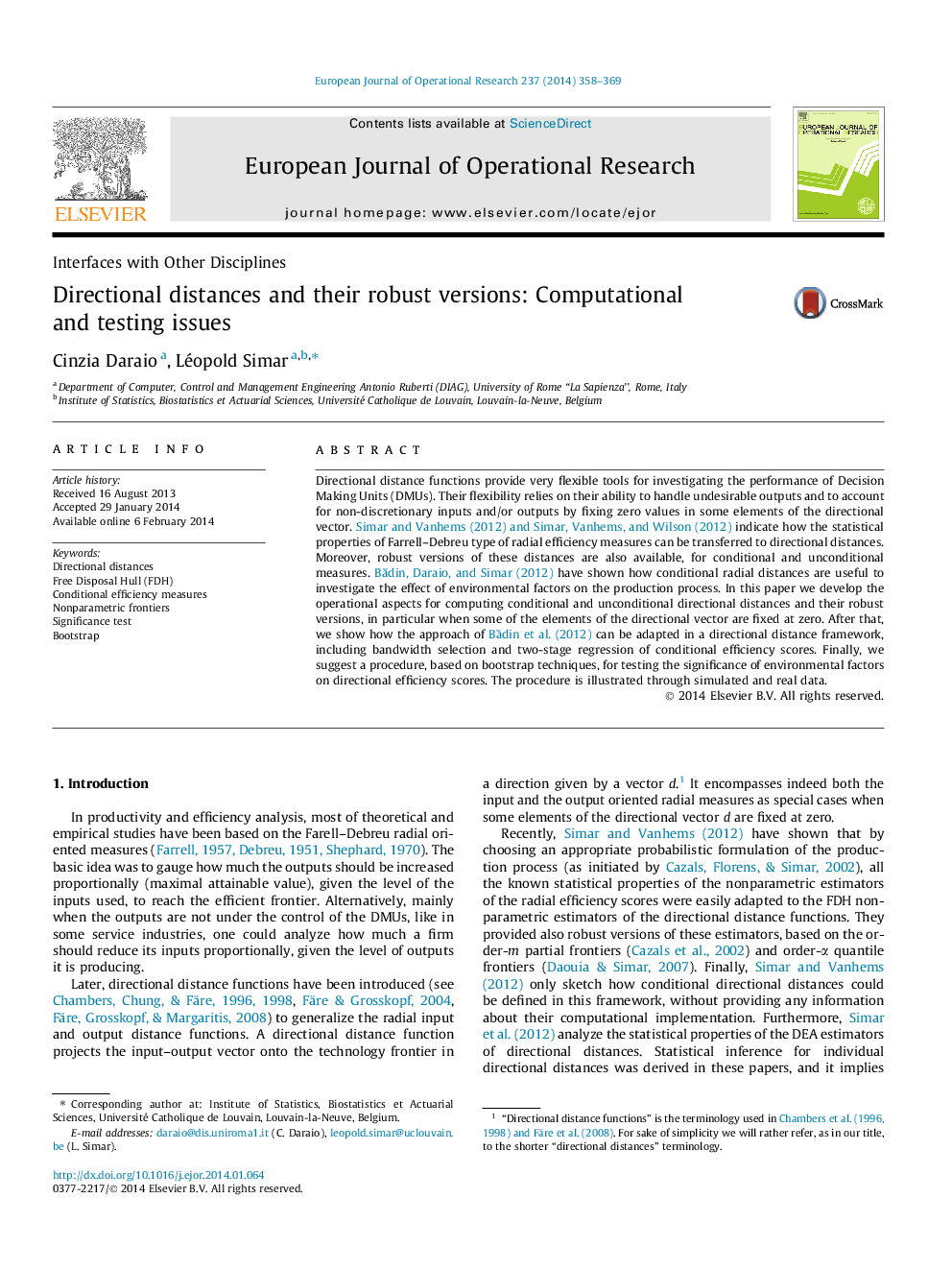| Article ID | Journal | Published Year | Pages | File Type |
|---|---|---|---|---|
| 480996 | European Journal of Operational Research | 2014 | 12 Pages |
•Practical computations of directional distances and their robust versions.•Conditional and unconditional distances: cases with inactive directions.•Measuring the impact of environmental factors on efficiency with these distances.•Bandwidth selection for conditional directional distances.•Testing significance of external factors on efficiency with directional distances.
Directional distance functions provide very flexible tools for investigating the performance of Decision Making Units (DMUs). Their flexibility relies on their ability to handle undesirable outputs and to account for non-discretionary inputs and/or outputs by fixing zero values in some elements of the directional vector. Simar and Vanhems, 2012 and Simar et al., 2012 indicate how the statistical properties of Farrell–Debreu type of radial efficiency measures can be transferred to directional distances. Moreover, robust versions of these distances are also available, for conditional and unconditional measures. Bădin, Daraio, and Simar (2012) have shown how conditional radial distances are useful to investigate the effect of environmental factors on the production process. In this paper we develop the operational aspects for computing conditional and unconditional directional distances and their robust versions, in particular when some of the elements of the directional vector are fixed at zero. After that, we show how the approach of Bădin et al. (2012) can be adapted in a directional distance framework, including bandwidth selection and two-stage regression of conditional efficiency scores. Finally, we suggest a procedure, based on bootstrap techniques, for testing the significance of environmental factors on directional efficiency scores. The procedure is illustrated through simulated and real data.
